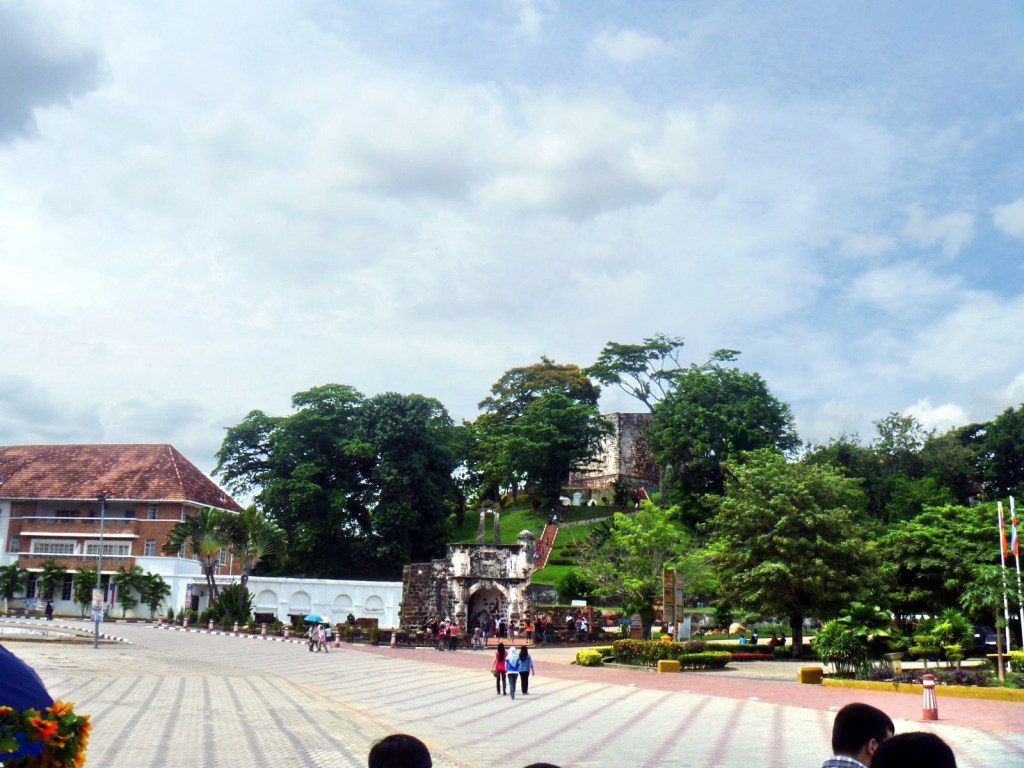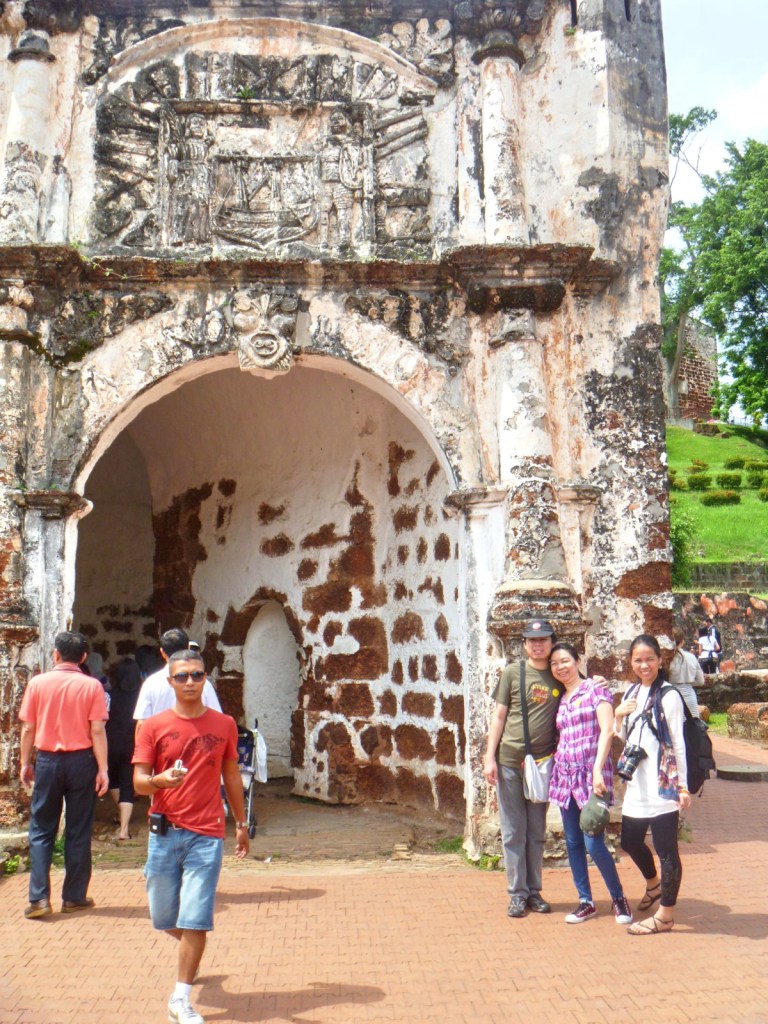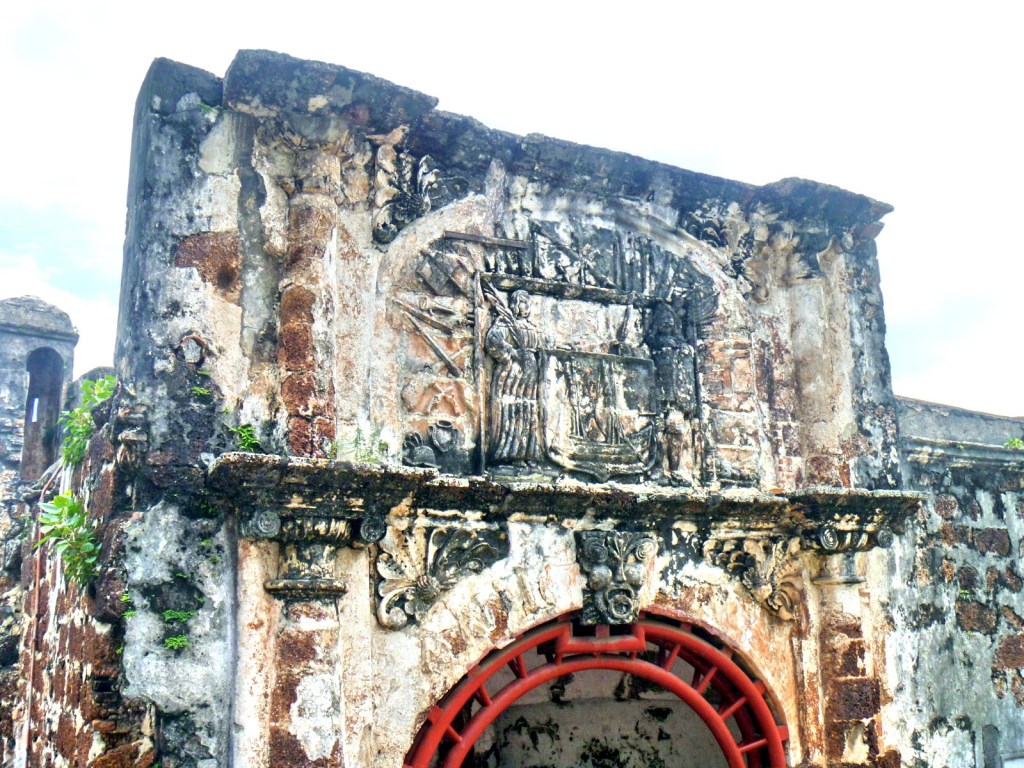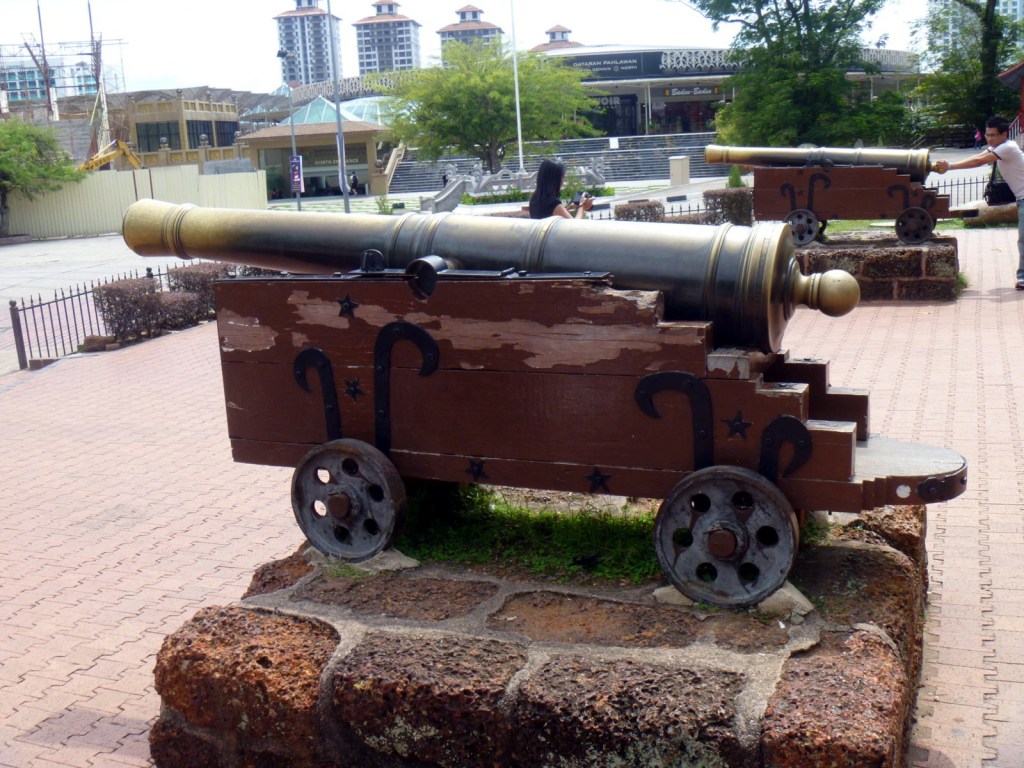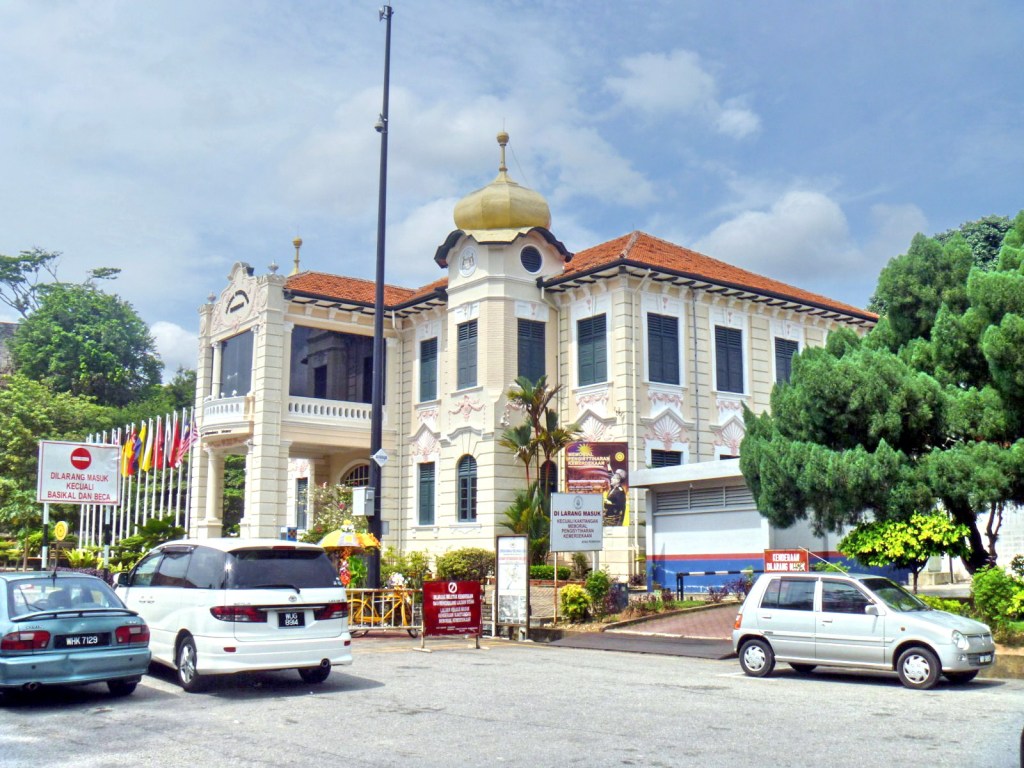After our tour of Bukit China, we proceeded to Restoran Keng Doma for a filling 5-course lunch. Afterward, our bus next brought our group to Fort A’Famosa (“famous” in Portuguese), among the oldest surviving European architectural remains in Asia. From here, it was to be all hiking. Trishaws, pedicabs decorated with bright plastic flowers and blasting pop music from speakers, are a common sight here.
Constructed by the Portuguese in 1511, the fort encircles the base of St. Paul’s hill. It once consisted of long ramparts and 4 major towers. One was a 4-storey keep while the others held an ammunition storage room, the Captain’s residence and an officers’ quarters. Most of the village clustered in town houses inside the fortress walls. As Malacca’s population expanded it outgrew the original fort and extensions were added around 1586.
In 1641, the fort suffered severe structural damage during the Dutch invasion that successfully drove the Portuguese out of Malacca. In 1670, the Dutch renovated the gate (which explains the logo “ANNO 1670” inscribed on the gate’s arch). Above the arch is a bas-relief logo the coat-of-arms of the Dutch East India Company.
In the early 19th century, the fortress changed hands again when the Dutch handed it over to the British to prevent it from falling into the hands of the French. The English, wary of maintaining the fort, ordered its destruction in 1806, almost totally demolishing it. In 1808, Sir Stamford Raffles, the founder of Singapore and a lover of history, intervened, on its behalf. Its small gate house, Porta de Santiago, is all that remains.In front of the gate are some old cannon.
Around the area are a number of museums, all part of the Malaccan Museums Complex. The Memorial Pengistiharan Kemerdekaan (Proclamation of Independence Memorial), located nearby, was the former club house of Melaka Club built in 1912. Established in 1985, it now houses invaluable exhibits of the country’s proclamation of independence on August 31, 1957 as well memorabilia and records related to the early history of the Malay Sultanate and the development of modern Malaysia.
Proclamation of Independence Memorial: Kompleks Pelancongan, Bukit St.Paul, Melaka, Malaysia. Tel:+606 284 1231. Fax:+606 282 9730

